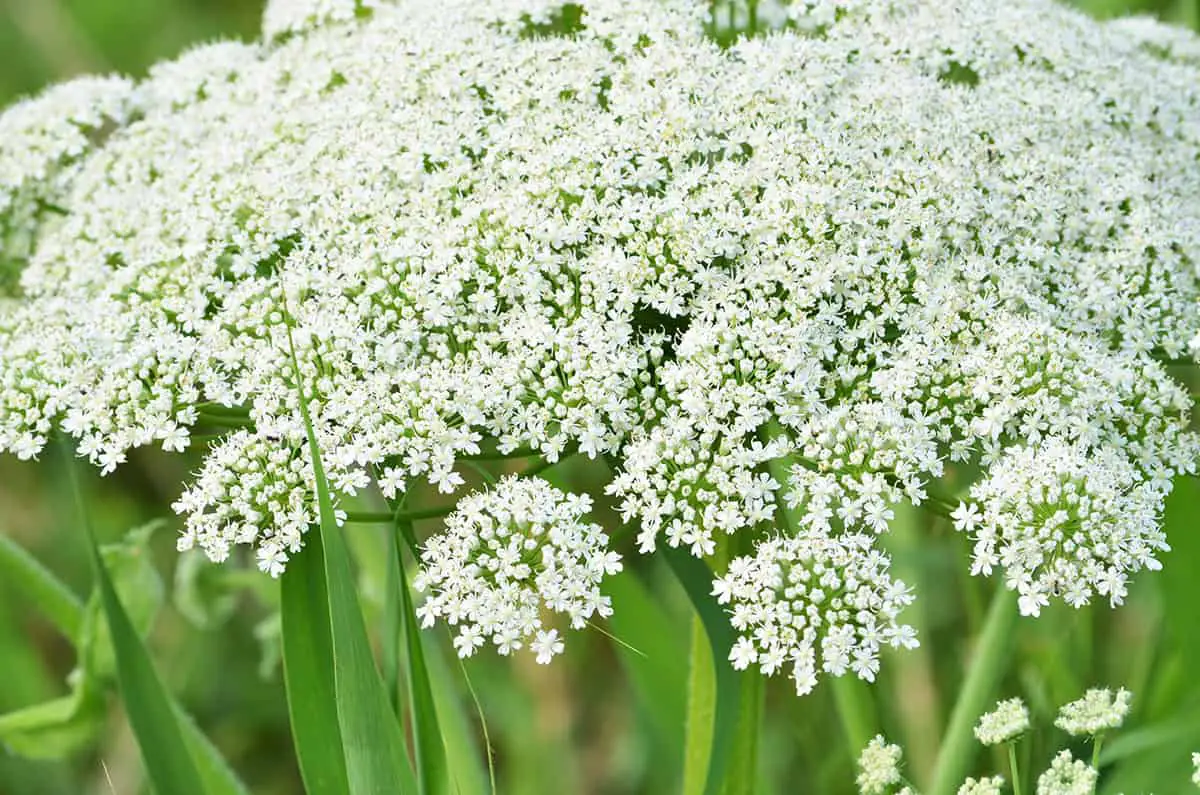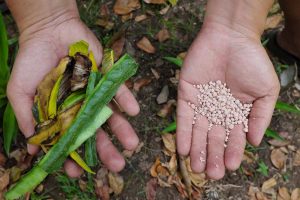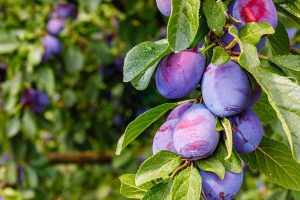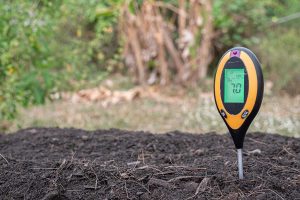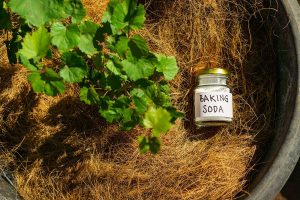Your child is playing in the yard and picks up a colorful berry from a nearby plant. You wonder if it’s safe. Knowing which plants are poisonous is crucial for keeping your family safe. Learn how to identify common poisonous plants and what steps to take to ensure your loved ones stay protected.
Table of Contents
Oleander

Oleander, a common plant, has a notorious reputation. This evergreen shrub grows rapidly. It can reach between 6 to 19 feet in height. The North Carolina Extension Gardener Plant Toolbox notes its use as a screening plant due to its size.
You should handle oleander with care. All parts of the plant contain toxic substances. If ingested, these can lead to severe illness or even death. The University of Florida notes that while oleander is beautiful, it’s best placed away from children and pets.
Skin contact with oleander sap may cause irritation. The Clemson University Home & Garden Information Center mentions ‘Hardy Red’ cultivars growing up to 8 feet tall, and even these red flowered varieties appear more toxic. Be cautious around this plant.
If you live in zones where oleander thrives, ensure you’re informed about its dangers. The Utah Poison Control Center warns about the plant’s potent cardenolide oleandrin, especially in the leaves. In some areas, yellow oleander seeds have even been used in suicide.
Remember, safety comes first with oleander. It retains its poisonous traits even when dry. A single leaf can be lethal to a child.
Deadly Nightshade
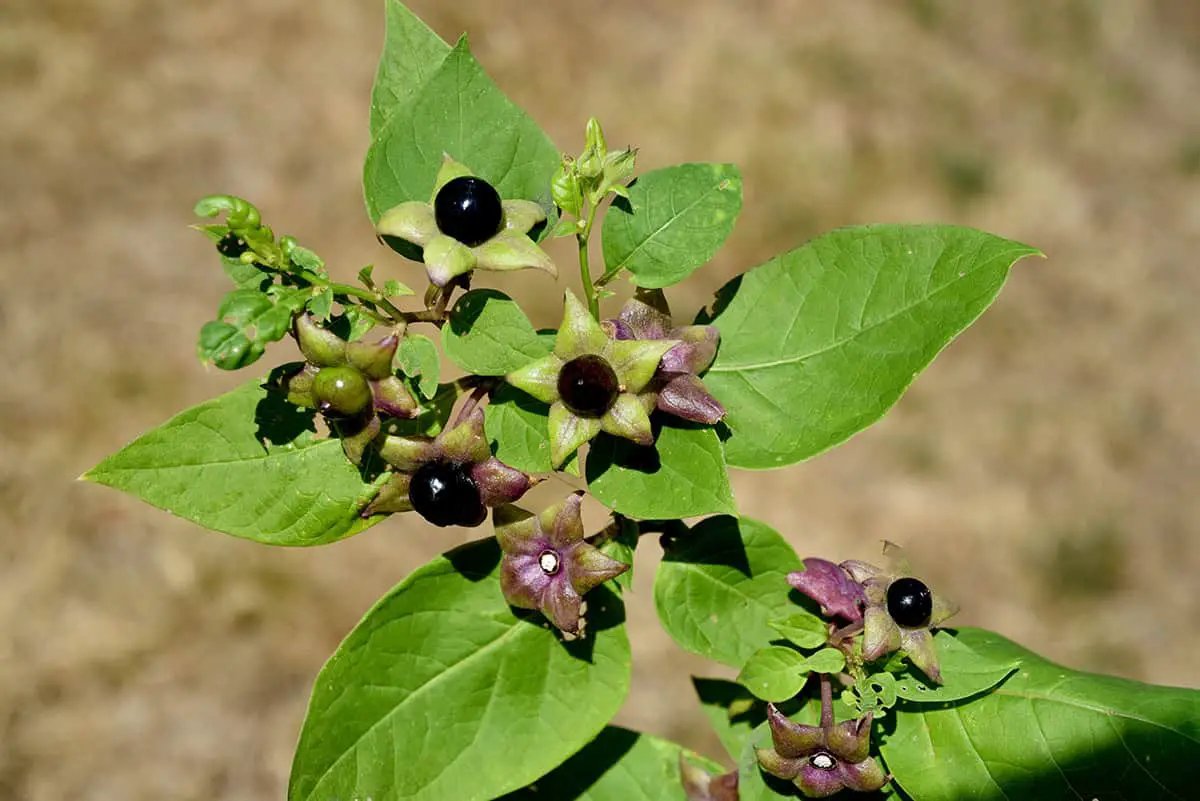
Deadly nightshade, also known as Atropa belladonna, is a highly toxic plant. You’ll find it native to Europe, North Africa, and Western Asia. Its toxins affect your nervous system.
The plant bears distinct purple bell-shaped flowers and shiny black berries. Although tempting, ingestion of these berries may be fatal. The entire plant is poisonous, with roots being the most toxic part.
You should recognize its symptoms of poisoning. They include dilated pupils, rapid heartbeat, and hallucinations. In severe cases, it can cause respiratory failure.
For your safety, avoid touching or consuming the plant. If you suspect exposure, seek medical assistance immediately.
Castor Bean
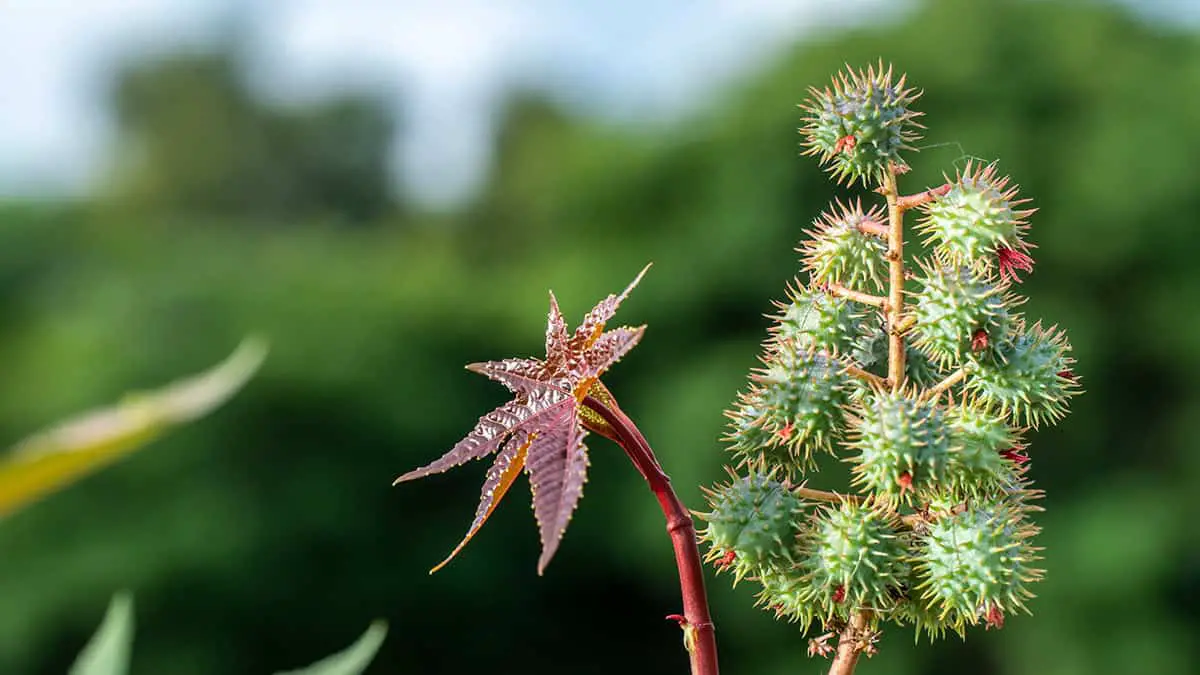
The Castor Bean plant, scientifically known as Ricinus communis, is a species that requires your careful attention. Its seeds contain ricin, a potent toxin. This fact means you must handle the plant with caution, especially around children and pets. Ingestion of the seeds could lead to severe poisoning.
Characterized by its large, distinctive leaves and spiky seed pods, the Castor Bean plant thrives in warm climates. It can grow as a small tree in such regions. The allure of its tropical appearance might tempt you to keep it in your garden. However, the risk associated with its toxicity is significant.
You need to recognize the symptoms of ricin ingestion: nausea, vomiting, and abdominal pain are common signs. Immediate medical attention is crucial in the event of ingestion. To minimize risk, some gardeners opt to remove the flowering spikes before seeds develop.
Despite these risks, the plant is not without its uses. Castor oil, derived from the seeds, is processed in a way that inactivates the ricin, making it safe for use in medicines and cosmetics. It’s important to understand the dual nature of the Castor Bean plant: beneficial yet potentially dangerous.
Lily Of The Valley
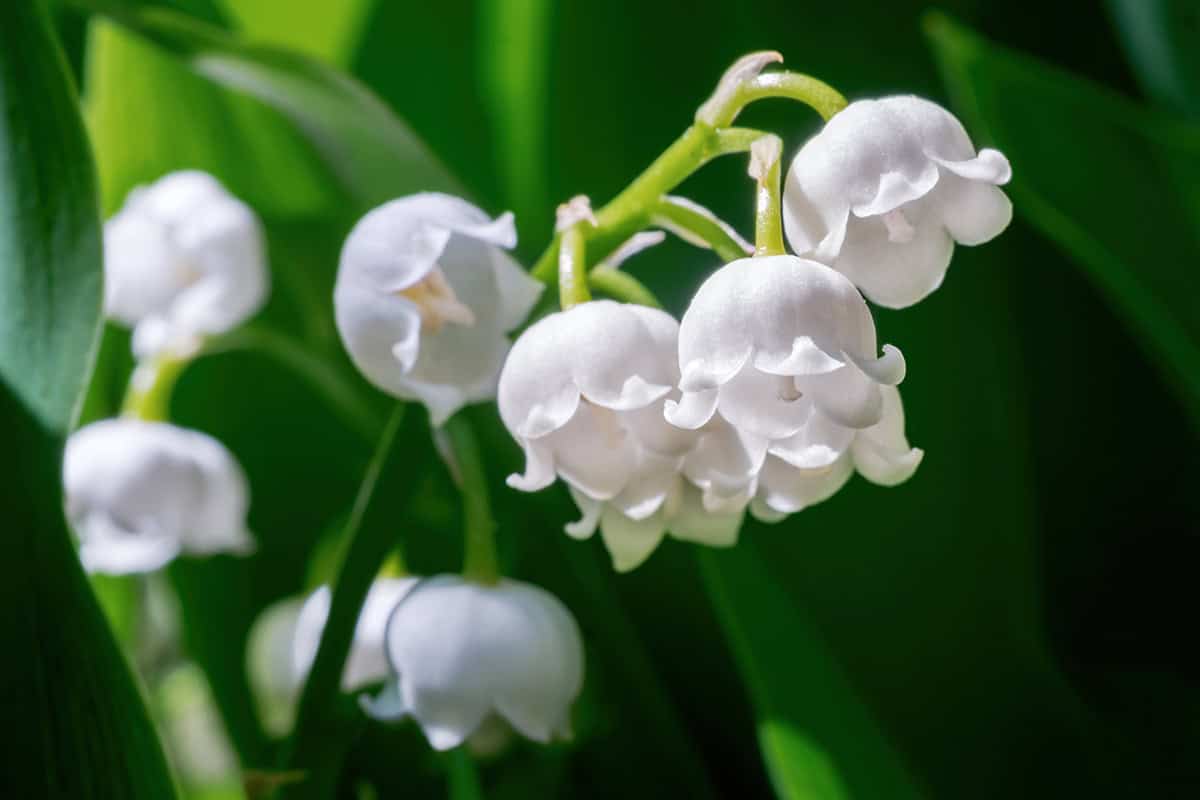
Lily of the Valley is a beautiful but dangerous plant. You can recognize it by its white, bell-shaped flowers. In spring, they release a sweet fragrance. This plant thrives in partial shade and can often be found in gardens.
Each part of Lily of the Valley contains toxins. If you touch or ingest any part, it could harm you. The plant has glossy green leaves and may bear red berries in fall. Caution is crucial around it.
The scientific name for Lily of the Valley is Convallaria majalis. This plant is not only toxic to humans but also to animals. Symptoms of poisoning can include nausea, vomiting, and even cardiovascular issues.
Foxglove

Foxglove, a plant you may recognize for its tall, striking blooms, is both beautiful and dangerous. Its botanical name is Digitalis purpurea, and it’s known for having high-severity poison characteristics. If you touch or ingest this plant, you could be at risk of poisoning. It’s crucial for you to be aware of its toxic nature, especially if you have children or pets.
You’ll find the foxglove plant prefers moist, well-drained soil and often thrives with afternoon shade. It’s a common sight in many gardens and has distinctive tubular flowers that range from purple to white, with spotted patterns inside.
The plant grows in the form of a rosette of leaves during its first year. In its second year, foxglove reaches its full height, which can be up to 4 feet. You’ll admire its stunning flowers that attract various pollinators. However, always remember to handle the plant with care due to its poisonous qualities.
Foxglove contains chemicals that have been used in heart medication called digitalis. These compounds must be administered precisely, as they are therapeutic in small, controlled dosages but harmful if misused. Your awareness of its medicinal value should come with a caution not to self-administer.
Hemlock
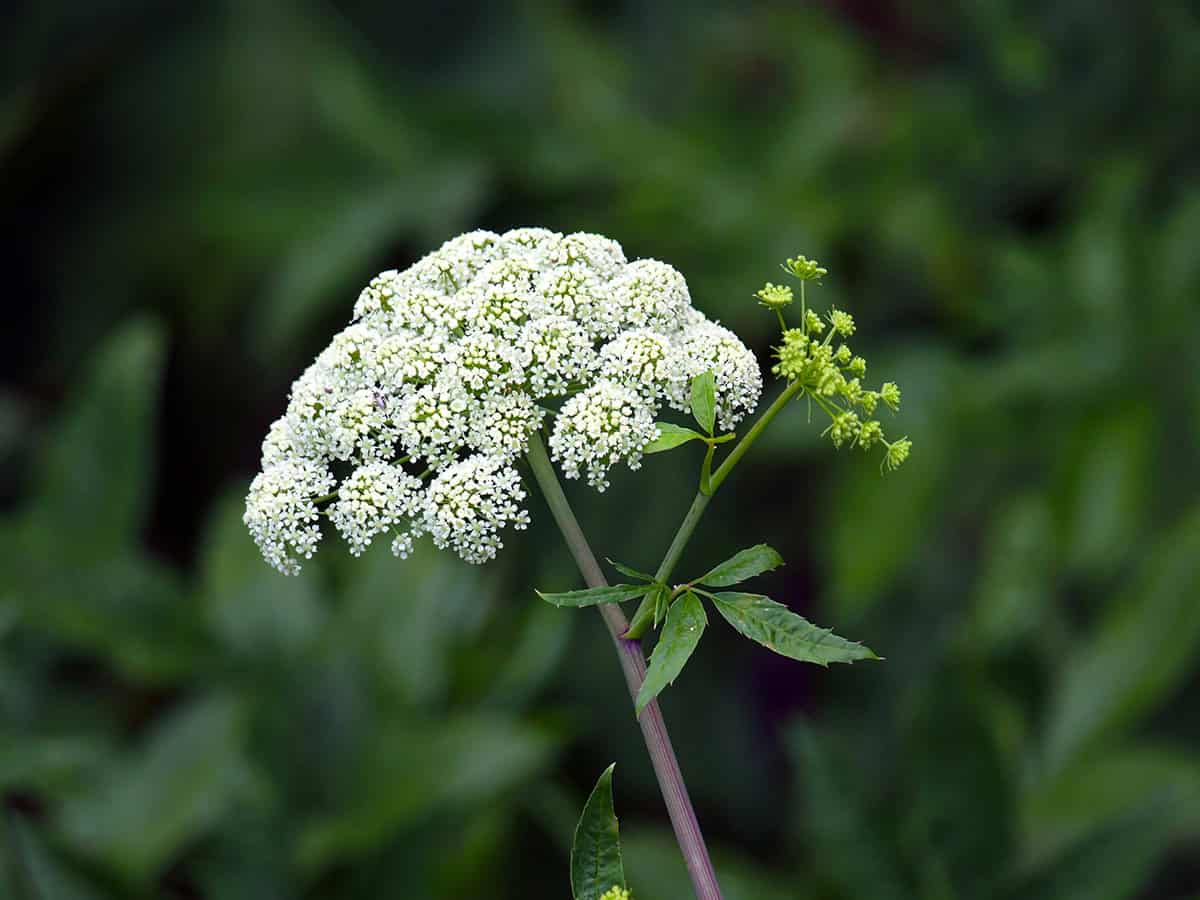
Hemlock is a toxic plant. Conium maculatum is the scientific name. Your understanding of this plant is crucial for safety. Poison hemlock looks similar to harmless plants, such as Queen Anne’s Lace.
The plant is invasive and originates from Europe and North Africa. It grows near rivers, railways, and roads. You may encounter poison hemlock in these areas. The plant blooms white flowers between June and July.
All parts of the plant are poisonous. This includes the leaves, stems, and seeds. The toxicity comes from alkaloids. The highest concentrations are in the roots and seeds.
Despite its name, poison hemlock does not always smell bad. However, some people detect a musty odor. Handle the plant with care, as its sap can irritate your skin. If you must remove the hemlock, wear protective gloves.
Jimsonweed
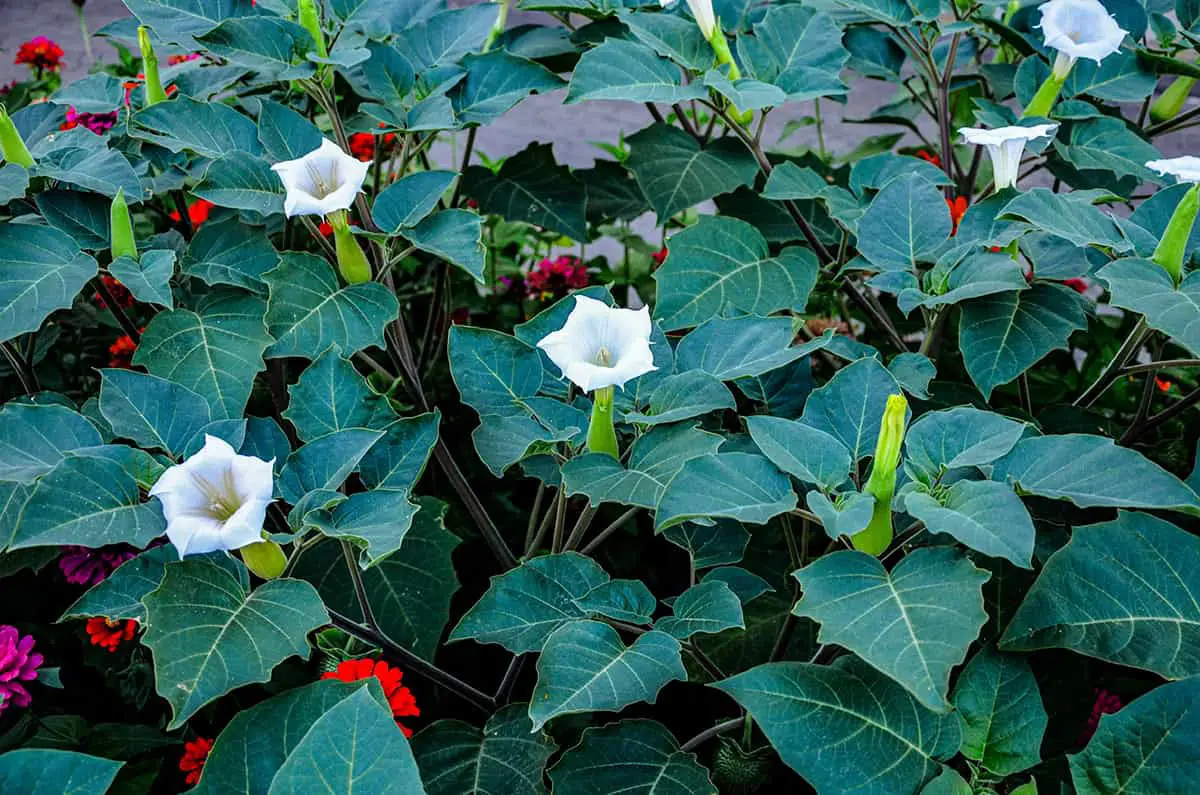
Jimsonweed is a poisonous plant you may encounter in various environments. Known scientifically as Datura stramonium, this plant thrives in rich soils. It often grows in places like cultivated fields and along roadsides. Recognizing Jimsonweed is important for your safety, as all parts of the plant contain toxic alkaloids.
This plant reaches a height of over 5 feet and has distinctive features. You can identify Jimsonweed by its large, trumpet-shaped flowers and spiky seed pods. The flowers are usually white or purple. If you have curious pets or livestock, keep them away from this plant. Jimsonweed is especially dangerous to animals due to its high alkaloid content.
In cases of ingestion, Jimsonweed causes serious health issues. Symptoms can include dilated pupils, rapid heartbeat, and hallucinations. If you suspect Jimsonweed poisoning, seek medical help immediately. Prompt action is crucial.
For those involved in agriculture, it is particularly noteworthy in soybean fields. Jimsonweed competes with crops and is difficult to manage once established. If you find it on your property, it’s advisable to remove it carefully, wearing gloves to avoid skin contact. Always dispose of the plant responsibly to prevent it from spreading.
Aconite
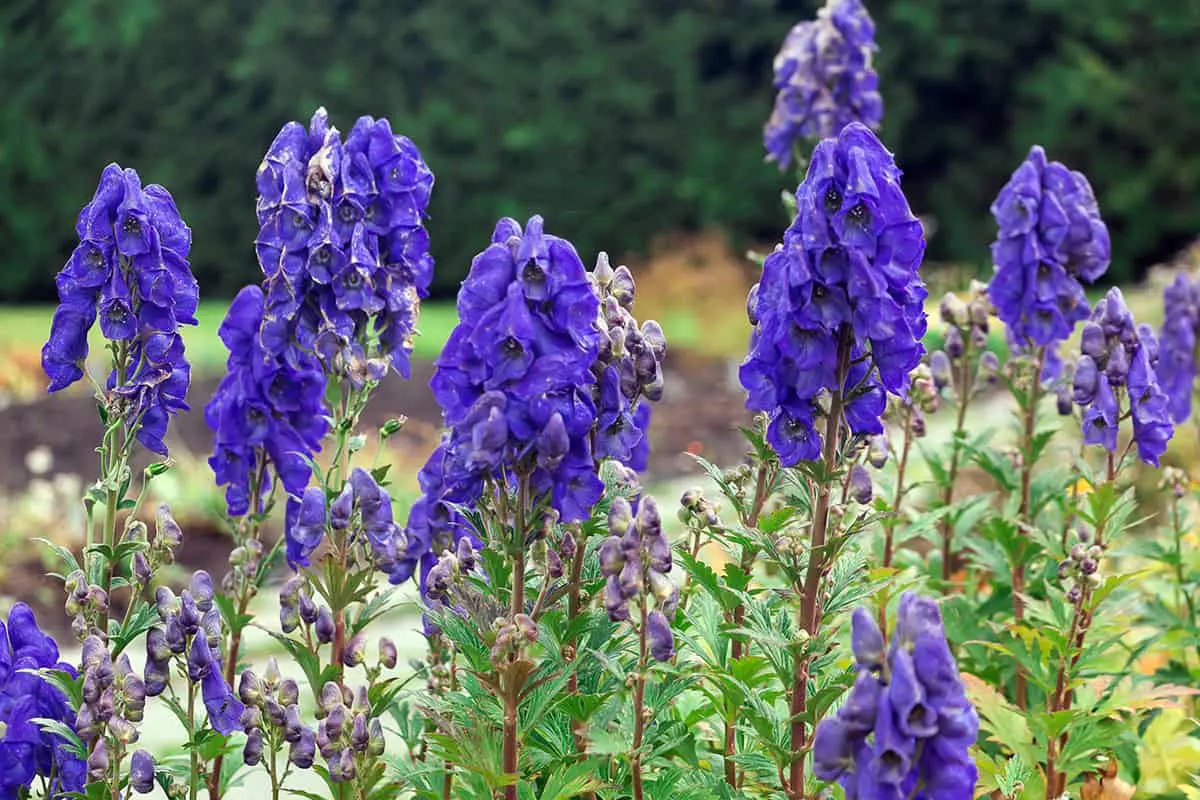
Aconite, also known as monkshood or wolfsbane, presents a high risk of poison to humans and animals. If ingested, it can be fatal. Your exposure to this plant can lead to symptoms such as a burning sensation in the mouth, vomiting, and severe digestive upset. Weakness in muscles, convulsions, and respiratory paralysis may follow.
The plant’s poison is in the form of alkaloids, primarily aconitine. It affects the nervous system directly. Handling aconite requires extreme caution due to its toxic nature. Wear gloves to prevent skin contact.
In history, aconite had uses in hunting and warfare. People applied it to arrows and weapon tips for its lethal effect. Despite its dangers, aconite has been used in traditional medicine with strict controls.
When encountering plants in the wild or gardening, identify aconite by its hooded flowers. They are typically vivid blue or purple. Aconite thrives in moist, shaded areas. Keep pets and children away from areas where aconite grows.
In case of accidental ingestion, seek medical assistance immediately. Prompt action can be crucial. Remember, when in doubt, steer clear of unfamiliar plants, especially those known for their toxic properties like aconite.
Rosary Pea
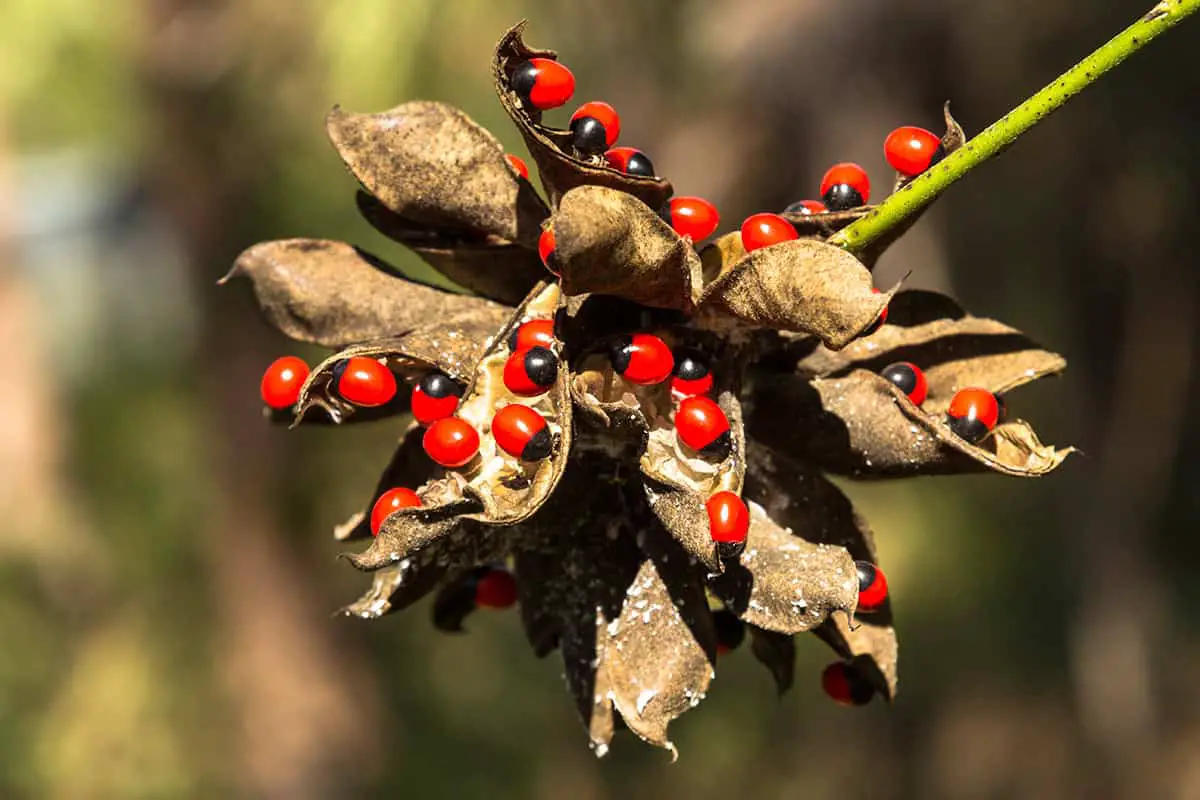
Rosary pea, known scientifically as Abrus precatorius, is a very poisonous plant. You should recognize it by its bright red seeds with a single black spot. Although attractive, these seeds conceal a dangerous toxin named abrin. Just a single seed, if chewed, can be lethal due to this substance.
This plant grows as a vine and belongs to the legume family. It is native to tropical regions but has spread to places like Florida, where it is now considered invasive. You can often find rosary pea in disturbed areas such as roadsides or gardens.
Handling rosary pea requires great care. Wear gloves because even skin contact with broken seeds can pose risks. Never ingest any part of this plant, as the roots and seeds are highly toxic. If you have rosary pea on your property, consider removing it safely to reduce potential hazards.
White Snakeroot
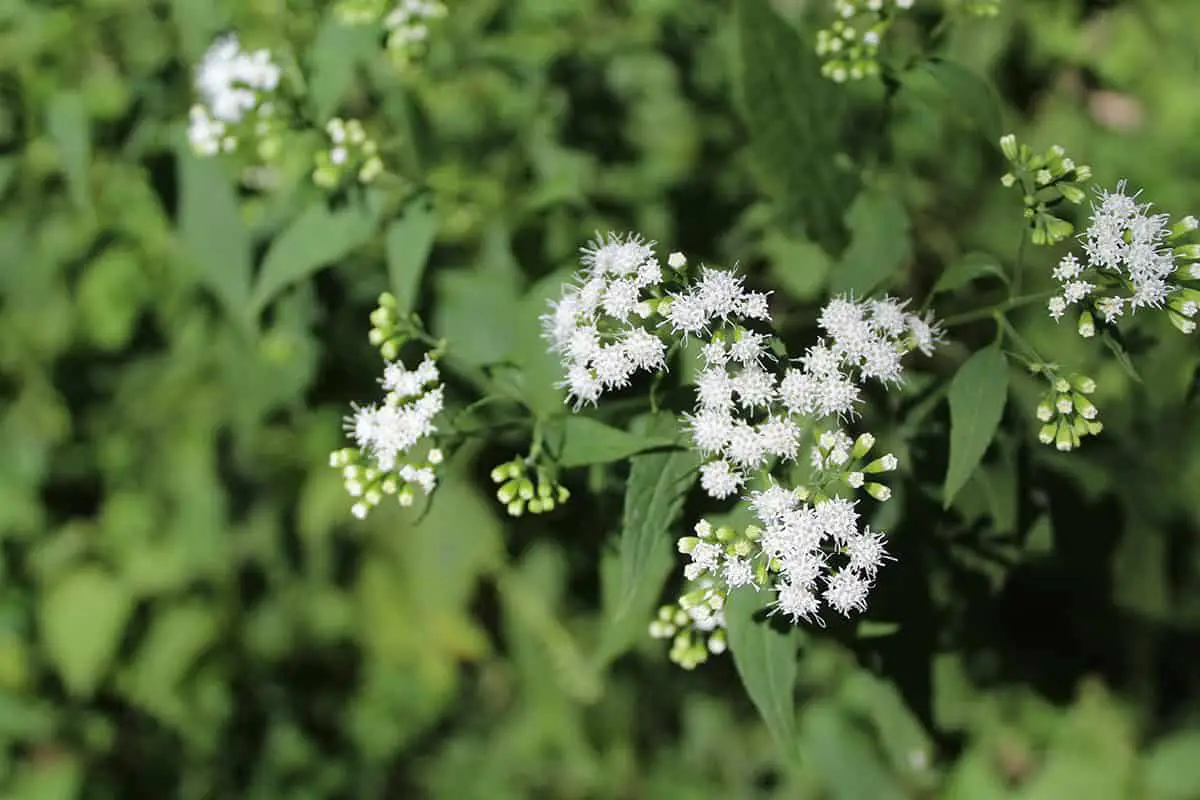
White Snakeroot is a toxic plant you should recognize. It grows as a herbaceous perennial and flourishes in woodland areas. Found mainly in the eastern United States, it thrives in a variety of habitats from rich woods to rocky spaces.
This plant poses a high poisoning risk. Its leaves and stems contain a toxin named tremetol. If livestock consume tremetol, it can cause a serious condition called trembles, which can be fatal. It’s especially dangerous if these animals are part of a dairy supply, as tremetol can contaminate the milk.
Exercise vigilance if you have animals grazing near White Snakeroot. Ensure they don’t ingest this plant. Doing so helps prevent the toxin from entering the food chain.
Identify White Snakeroot by its white flower clusters and toothed leaves. It reaches up to 3 feet tall. Beware in late summer to fall when it flowers, and be extra careful removing it as all parts are poisonous.
Yew
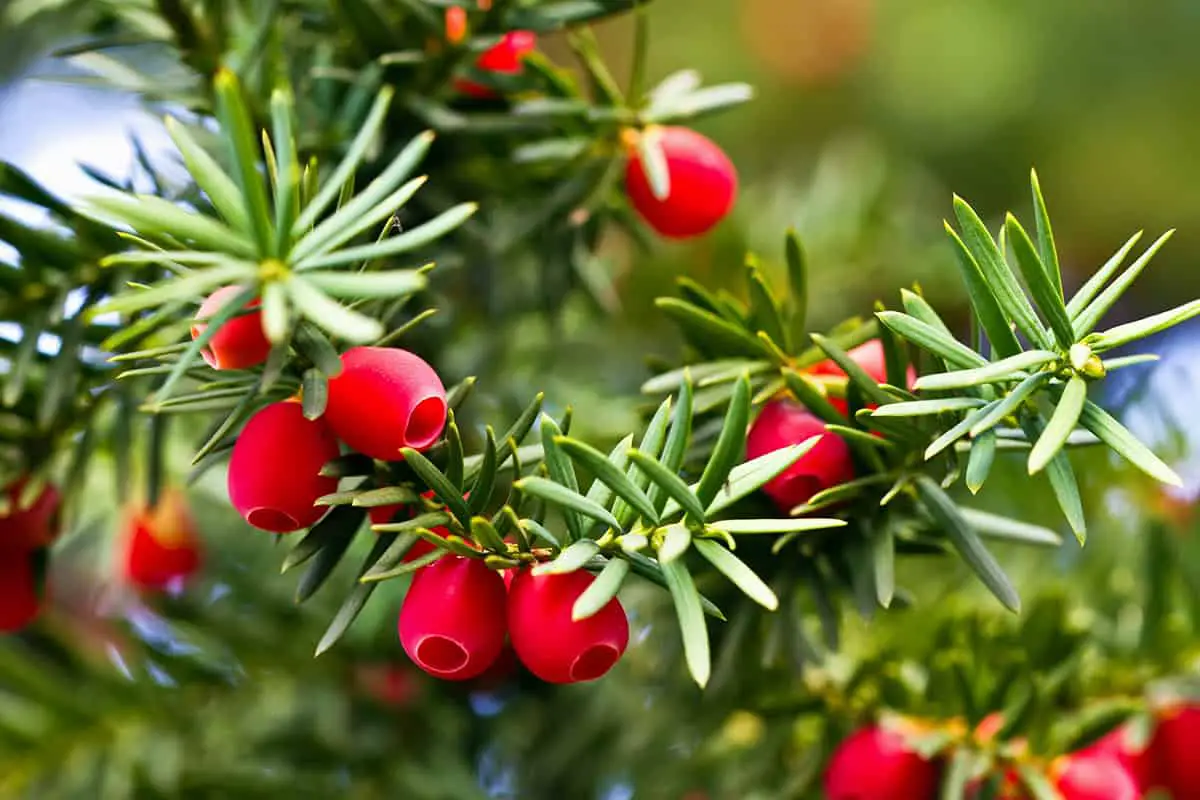
Yew trees contain potent compounds that are toxic to humans and animals. Learning about these dangers helps you avoid accidental poisoning. Yews are evergreen plants, easily recognized by their red, fleshy cones and needle-like leaves.
The leaves, seeds, and wood of the yew tree contain taxine alkaloids, which are highly toxic. Even a small amount can be lethal. Animals, particularly monogastric, such as horses, suffer from the plant’s toxicity. The lethal dose is about 0.1% of the animal’s body weight. Symptoms of poisoning include difficulty breathing, trembling, and heart failure.
Ingesting yew should prompt immediate medical attention. No part of the plant, except the red aril surrounding the seed, should be consumed. Even then, caution is advised as the seed inside is poisonous.
If you suspect yew poisoning, look for remnants of the plant in the mouth or digestive tract. Advanced diagnosis may require laboratory analysis, like gas chromatography-mass spectrometry (GC/MS).
Rhododendron

Rhododendron plants are known for their vibrant flowers and broad leaves. They belong to the Ericaceae family, which also includes the blueberry plant. You often see them as ornamental plants in gardens due to their appealing appearance.
These plants, however, possess toxic properties. In all parts of the plant, toxins are present that can cause harm if ingested. Your pets and livestock are at risk too. Be cautious and prevent them from consuming any part of the rhododendron.
Management of rhododendrons in your garden demands specific care. They thrive in well-drained, acidic soil. Also, ensure they receive appropriate sunlight and water. Pruning keeps their shape and promotes healthy growth.
If you suspect rhododendron poisoning, seek medical attention. Symptoms include vomiting, drooling, weakness, and in severe cases, coma. Acting quickly is crucial for recovery.
Azalea
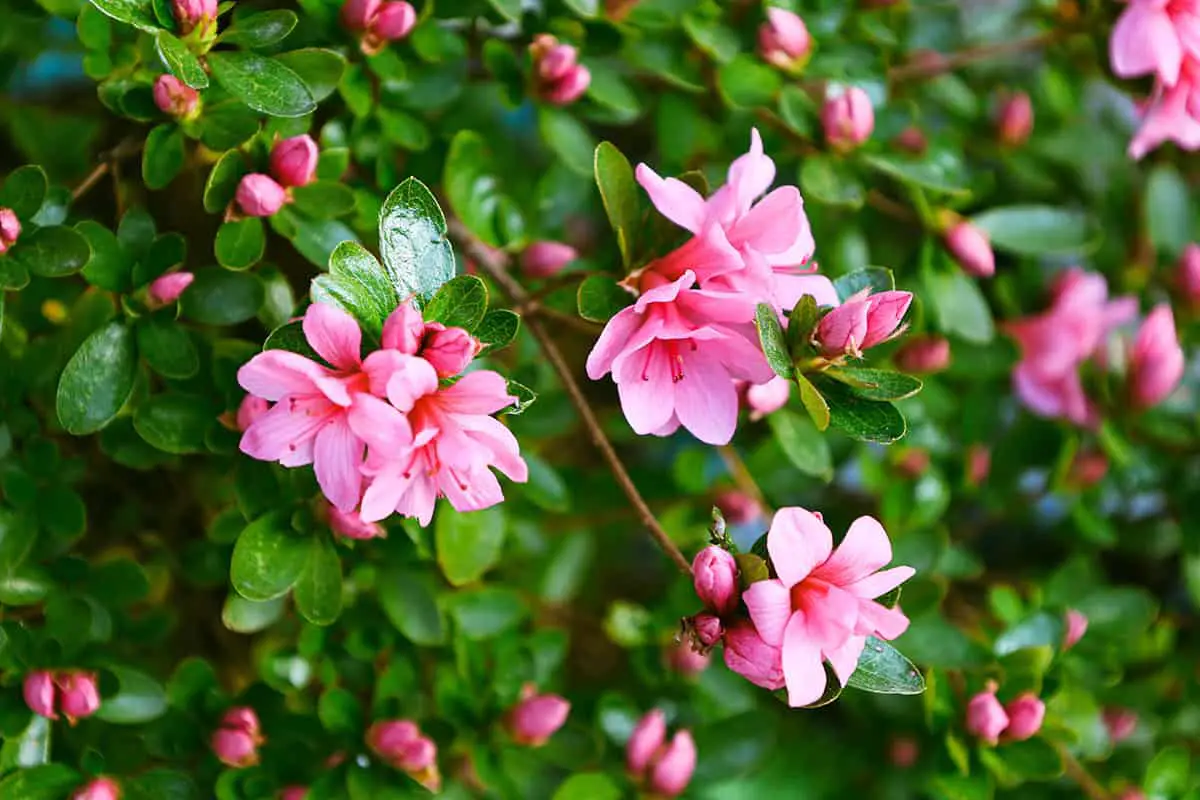
Azaleas are a common plant in gardens. They are colorful and brighten up landscapes. Yet, some azaleas can harm you. They contain toxins that can cause reactions if ingested.
Your azaleas like acidic soil and partial sunlight. They are delicate and need protection from harsh conditions. Always handle them with care, as they are poison-prone.
When you suspect azalea poisoning, look for nausea and difficulty breathing. It’s crucial to seek medical advice promptly. These symptoms can be serious if not treated.
Autumn Crocus
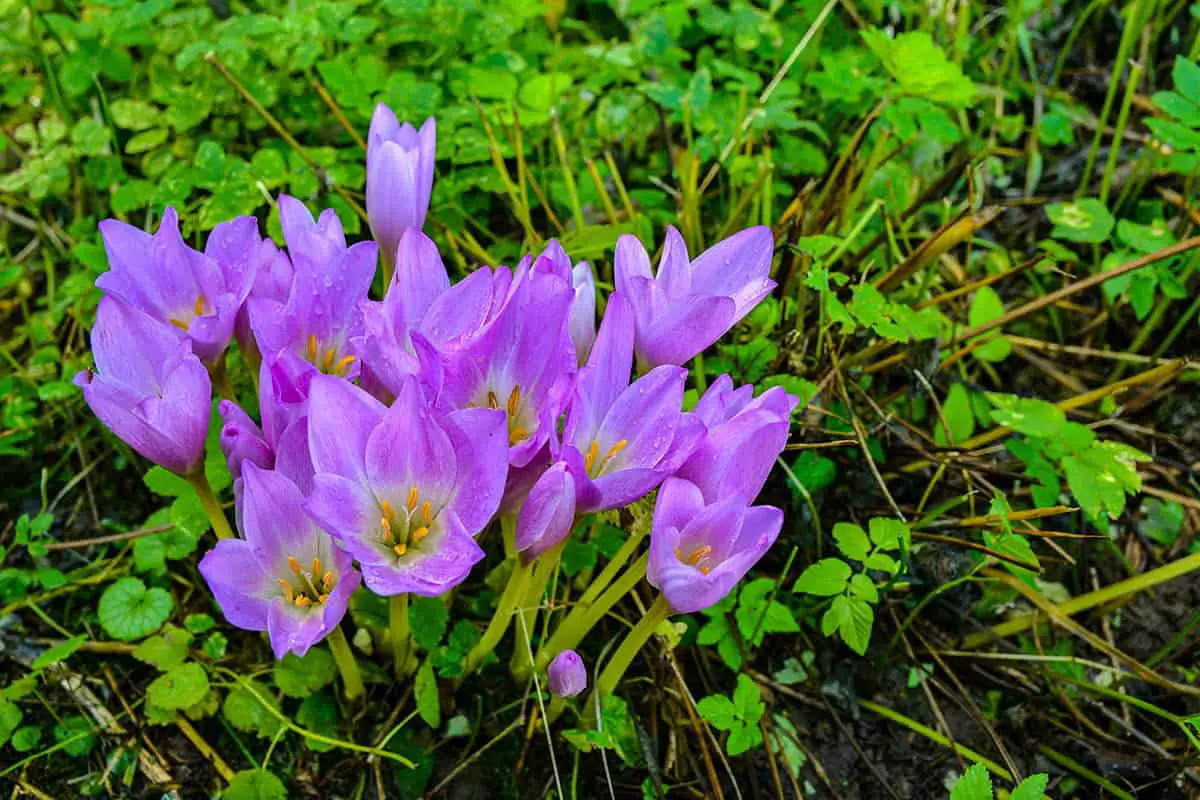
The Autumn Crocus is a perennial herb with notable poison characteristics. Colchicum autumnale, as scientists know it, blooms in fall. You can recognize its purple-pink flowers, which are appealing yet highly toxic. They contain colchicine, a potent compound that resembles arsenic in its poisoning effects.
This plant grows from a corm and displays flowers in September. You’ll find it in meadows, alpine regions, and sometimes in gardens. Its beauty is deceiving, as all plant parts can lead to poisoning. If ingested, the effects are serious and immediate veterinary or medical help is critical.
Autumn Crocus is also known as meadow saffron or naked ladies. While toxic, researchers have found medical uses for colchicine. Still, it remains essential that you handle the plant with care.
Water Hemlock
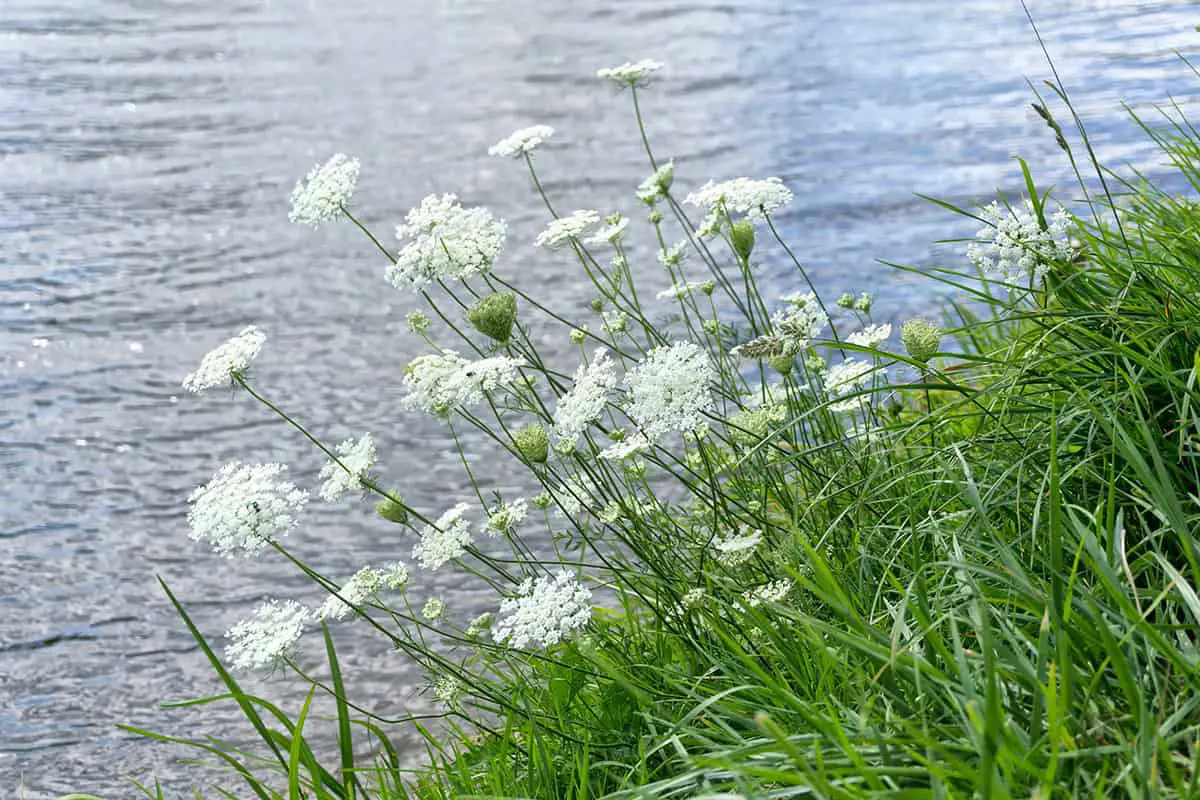
Water hemlock is a highly toxic plant. You may find it near wet areas like streams and swamps. Recognizing this plant is important for your safety. Its small, white flowers form umbrella-shaped clusters.
If you ingest water hemlock, it can be deadly. Symptoms include seizures leading to death. It affects humans and livestock, and quick action is critical in the event of poisoning.
The plant has a distinct look. It features hairless stems and can sometimes be seen with purple spots. The roots, especially, contain the toxic substance cicutoxin.
To protect yourself and animals, avoid areas where it commonly grows. Learn how to distinguish water hemlock from other plants. If you suspect exposure, seek medical help immediately.
Angel’s Trumpet
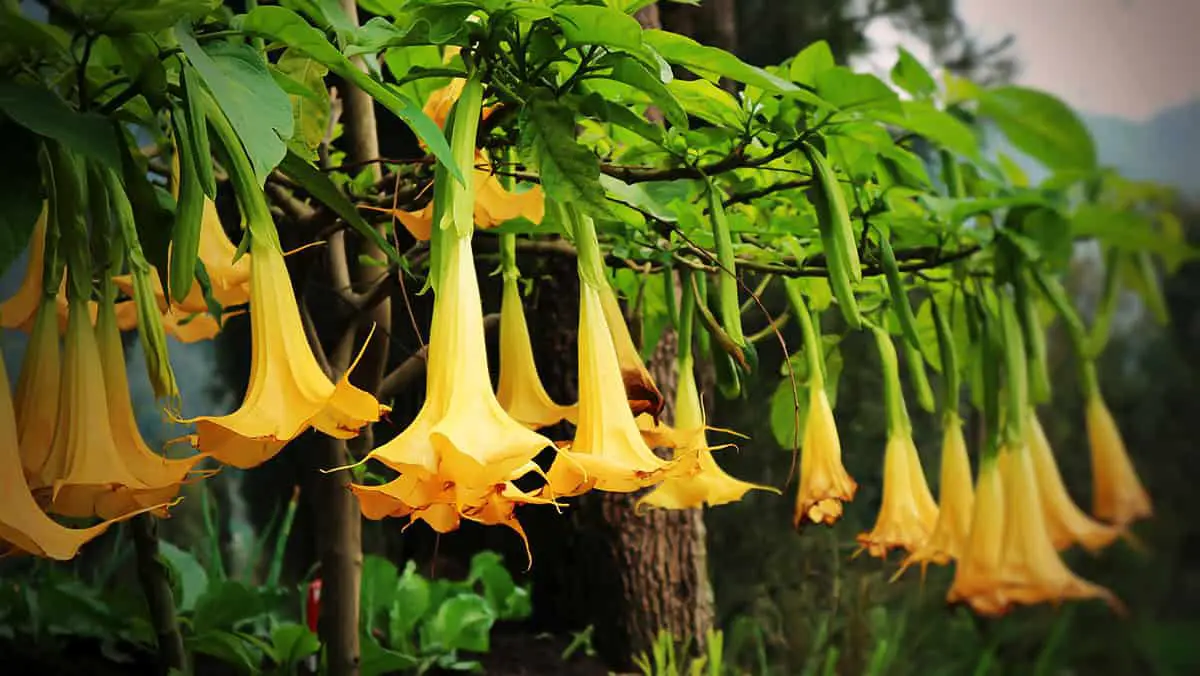
Angel’s Trumpet captivates many gardeners with its large, fragrant flowers. Yet, you should handle this plant with care because it contains toxic substances. The beauty of its pendulous blooms contrasts with the risk it poses if ingested.
Within the Angel’s Trumpet, several parts carry toxins, such as the leaves and seeds. You might admire this plant in warm climates where it thrives outdoors. In cooler areas, gardeners often grow it as an annual or a houseplant.
If you suspect accidental ingestion, seek medical attention immediately. Symptoms of poisoning can range from mild to severe.
Larkspur

Larkspur plants are highly toxic to livestock, especially cattle. Your awareness is crucial for managing grazing animals. Larkspur contains deadly alkaloids, which severely affect the nervous system.
When you recognize these plants, note they are most toxic during their flowering stage. In Larkspur, the risk to cattle is at its peak in late spring to early summer. Livestock symptoms include nervousness and muscle twitches.
To keep animals safe, ensure they avoid areas where larkspur is dense. Double-check the parts of your pasture where these plants grow. Managing grazing routines and keeping cattle away from larkspur during high-risk periods is vital.
If you suspect larkspur poisoning, contact a veterinarian promptly. They provide treatment that can save your animals.
Dumb Cane
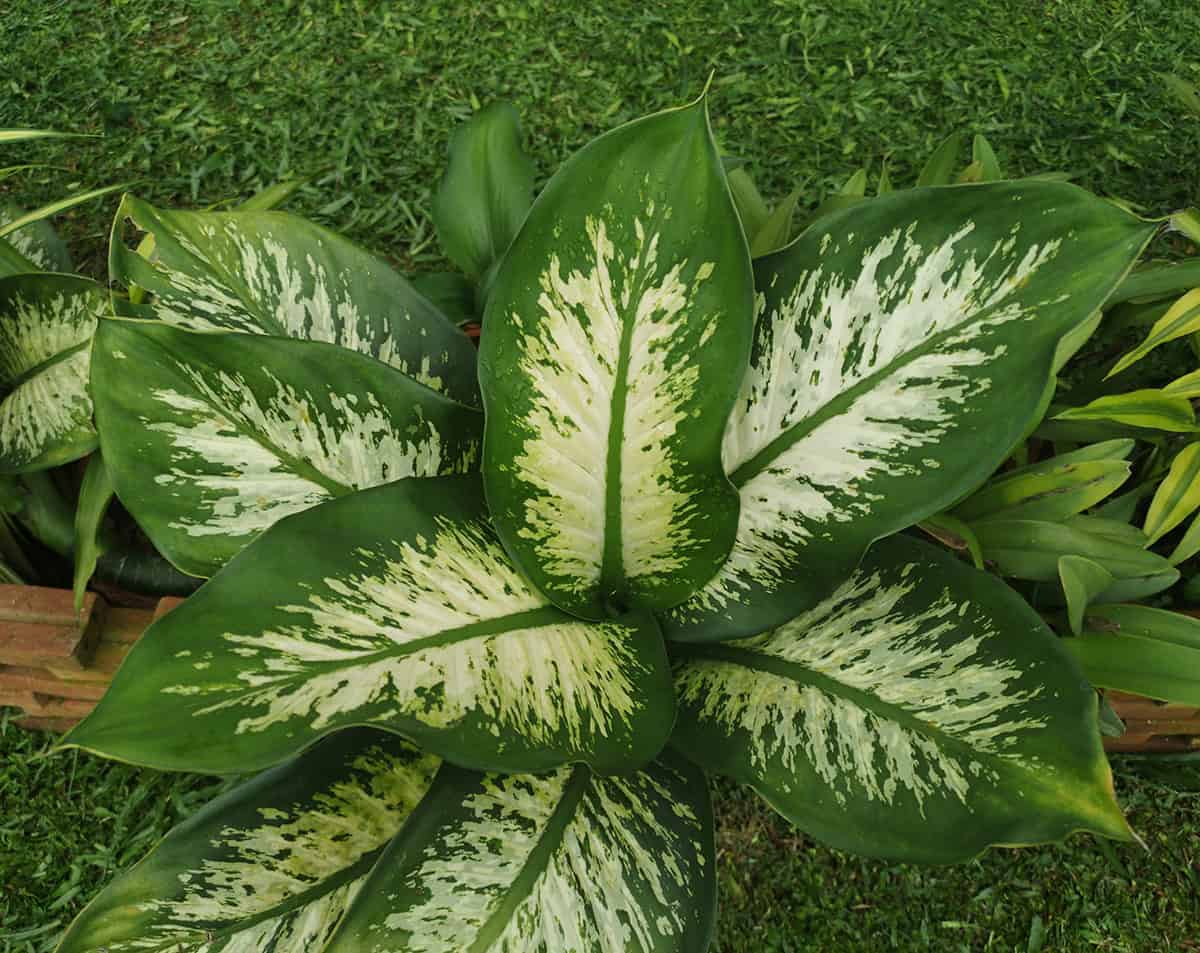
Dumb Cane is a common houseplant recognized for its striking leaves. Dieffenbachia, its scientific name, features lush green foliage marked with white or yellow patterns. It’s not just a decorative plant; it’s a toxic one. Children and pets should avoid it, as its sap contains harmful substances.
When you handle Dumb Cane, be cautious. If your skin touches the plant’s sap, wash the area immediately. Ingesting parts of this plant can cause a temporary loss of speech. This effect gives the Dumb Cane its name. Contact with the sap can also lead to skin irritation.
Indoor gardeners appreciate Dumb Cane for its ability to thrive indoors. It prefers bright, filtered light to maintain its vibrant leaf coloration. Remember that the right care is crucial for its growth. Over-fertilization or poor light can harm the plant.
Poison Ivy

Poison ivy is a common plant in North America known for causing skin irritation. Recognize it by its signature trio of leaflets. The leaves can appear smooth or have notches.
Identification is crucial to avoid the rash that poison ivy plant causes. Remember this phrase: “Leaves of three, let it be.” The appearance of the leaves can vary, and sometimes they resemble mittens or have toothed edges.
The entire plant contains urushiol, an oily compound that causes an allergic reaction. Touching any part of the plant can transfer urushiol to your skin. If burned, the resulting smoke can be extremely harmful when inhaled, leading to serious lung irritation.
Protection involves wearing long sleeves and gloves when you are likely to encounter the plant. Learning to identify poison ivy will help you stay clear of it during outdoor activities.
Treatment for contact with poison ivy includes washing the area with soap and water immediately. Over-the-counter creams can help alleviate the rash. Consult a healthcare provider if the reaction is severe.
Controlling the spread of poison ivy in your garden requires careful removal. Do not burn the plants, as this can release urushiol into the air. Use herbicides cautiously and according to the label instructions.
Mistletoe

Mistletoe is a traditional festive plant. It’s important to be aware of its potential toxicity. If ingested, the plant can be poisonous. It contains compounds that may cause unpleasant symptoms.
You might find mistletoe in various tree species. The American mistletoe is often seen in oak trees. Keep this plant out of the reach of children and pets. After handling mistletoe, make sure to wash your hands properly.
In the holiday season, mistletoe is popular for decoration. But, take care as the berries and leaves contain toxins. If consumed, they can cause effects such as nausea and abdominal pain. Mistletoe should be handled with caution during festivities.
Poinsettia
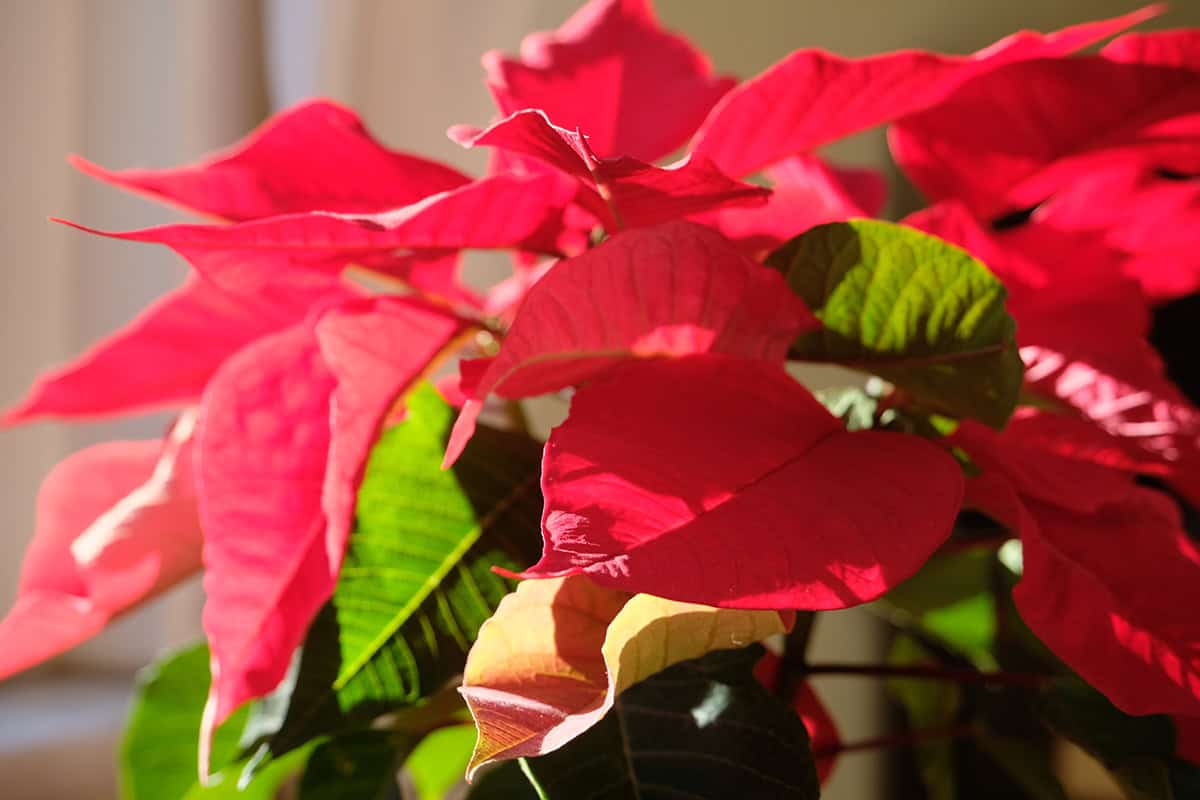
Poinsettias are widely known holiday plants. You may recognize them by their bright red leaves. The poinsettia is often considered poisonous. It’s crucial you know the facts about its toxicity.
The plant contains a milky white sap, found in its leaves and stems. If you ingest this, it may lead to mild irritation. Your skin could become irritated too if you’re sensitive. Eating the leaves is not advised, as they are not lethal.
Keep poinsettias away from pets, as animals might nibble on the leaves. The irritation is usually mild. Your cat or dog may drool or vomit after contact with the plant. While not deadly, monitoring your pets around poinsettias is wise.
Poinsettias add festive color to your home. They are safe with proper handling. Just keep them out of reach of children and pets to avoid any risk of stomach upset or skin irritation.
